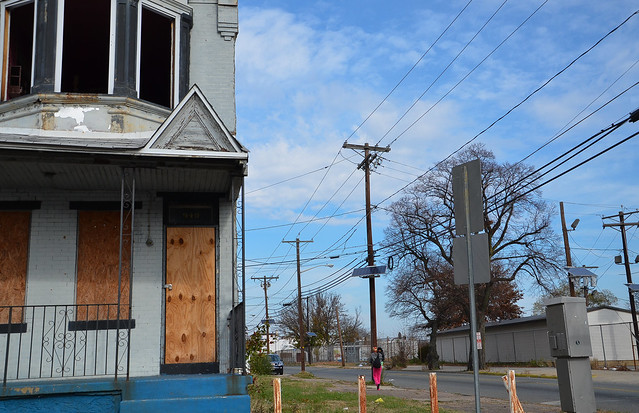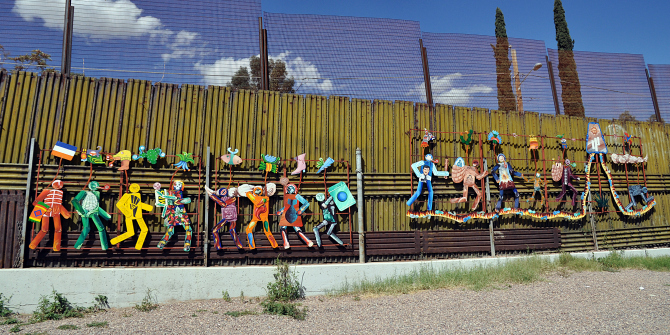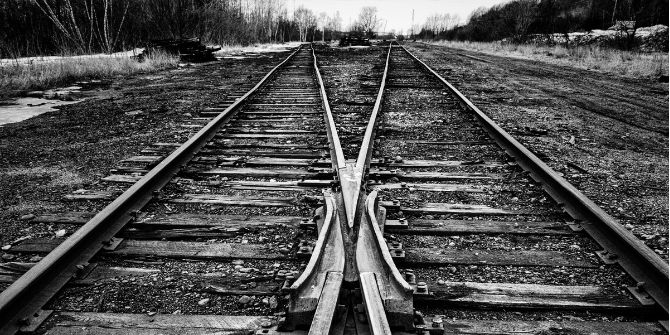 Rethinking the American City offers a fascinating survey of contemporary thinking about cities in a transnational context. Each chapter opens with an iconic image and includes a brief and provocative essay on a single topic followed by an extended dialogue among all the essayists. Topics range from energy use, design, and digital media to transportation systems and housing to public art, urban ruins, and futurist visions. Zachary Spicer is impressed by the experimental format, and recommends this read to students of urban studies.
Rethinking the American City offers a fascinating survey of contemporary thinking about cities in a transnational context. Each chapter opens with an iconic image and includes a brief and provocative essay on a single topic followed by an extended dialogue among all the essayists. Topics range from energy use, design, and digital media to transportation systems and housing to public art, urban ruins, and futurist visions. Zachary Spicer is impressed by the experimental format, and recommends this read to students of urban studies.
 Rethinking the American City: An International Dialogue. Miles Orvell and Klaus Benesch. University of Pennsylvania Press. November 2013.
Rethinking the American City: An International Dialogue. Miles Orvell and Klaus Benesch. University of Pennsylvania Press. November 2013.
Miles Orvell and Klaus Benesch give us Rethinking the American City: An International Dialogue. The emphasis in this book truly is “dialogue”. The topics covered in the book are interesting and thought-provoking, but the unique aspect of this book is its format. At the end of each chapter is a dialogue between the author and discussants, questioning and expanding upon the work presented.
Orvell and Benesch tell us in the opening chapter that the book is the product of a small conference. As the editors describe, they decided to engage a small group of internationally-renowned cultural studies scholars, urban historians, and architects in a conversation on American cities. The purpose was to conduct a “conceptual inventory” and create “an examination of some of the leading concepts and tools that govern our thinking about space, with an eye to their genealogy and their usefulness to the future.” At the conference, each speaker was assigned a broad topic – energy, sustainability, the multicultural city, ruins, aesthetic space, designing the city, mobility, the digital city, the future city – and wrote a paper that would begin an extended dialogue. Each paper would be discussed in detail and at considerable length (a rarity for academic conferences). The conversations would be recorded. Rethinking the American City is based upon these conversations. Each chapter includes both the paper written by a conference participant and the recorded dialogue between the author and discussants, which is presented (largely) at verbatim (with the exception of being edited for redundancy).
At first, the reader is unsure what to make of the dialogue at the end of each chapter. Many books are based upon conference proceedings, but generally authors take the comments they receive from discussants and revise their work accordingly prior to inclusion in an edited volume. This is not the case in Rethinking the American City. The dialogue is included and the reader is able to take into account the initial reaction of the discussants. Often, discussants hold differing views than the author, providing a nice contrast to the broader issue under discussion.
Two main chapters are particularly thought-provoking and pertinent in a contemporary discussion of city-building in America. The first, by Miles Orvell, discusses ruins and decaying urban infrastructure. Everything within a city, Orvell tells us, can fall into ruins. From factories, to homes, to entire cities, nothing is immune from decay. Nowhere is this issue more prevalent than in Detroit, a city routinely in news headlines as it goes through bankruptcy.

How should we view this decay, however? How can we make sense of it? Orvell provides us with an overview of theoretical and conceptual thinking about ruins and provides multiple lenses through which to view urban decline. The first is that ruins are a necessary part of our history in that they remind us of our past (and in some cases our mistakes). The second is that ruins stand as a rebuke to capitalist notions of endless progress. The third is that ruins are a natural, and therefore inevitable, part of the organic forces of urban growth and decay. In this, decaying places can be key places of exploration, largely as symbols of folly and unsustainable growth. Overall, Orvell’s work is important in broadening our view of decay. We can see ruins as functional and having a place within the larger urban landscape. A number of contemporary American cities – from Detroit, to Camden in New Jersey, to Gary in Indiana – have suffered decline in recent years. As employers have closed their doors and left town, populations have dwindled and urban infrastructure has suffered. What to do with these cities has become a national conversation. Within this context Orvell’s chapter is topical, timely and helpful.
McCullough’s chapter on the “digital city” is similarly topical and timely. By this point it is evident that technology has changed our lives, but how much has it changed the way that we interact with our surroundings? McCullough argues that the change has been profound. The largest change, McCullough tells us, is that the addition of ambient information media transforms the usability of the city. In this, McCullough provides some pertinent examples: Velib and Zipcar in transportation; Foursquare and Layer in social navigation; and Pachube and Senaris in environmental monitoring. In fact, even the way social media users “check in” to new locations around a city builds a social map of usage. McCullough argues that accumulations of tags, links, displays, and guest logs at particular locations around town soon become something to curate and be among. In this sense, technology adds another layer of urban infrastructure to our present system.
McCullough’s discussion is high-level and deeply rooted in some of the fundamental debates in communication theory. For the most part, the connection with the city is not always apparent. He does, however, conclude with an intriguing question to the reader: “does this latest layer of urban infrastructure help one tune in or just tune out?” This is where the dialogue section that ends each chapter comes in very handy. The discussants bring McCullough’s work back into an urban context and properly situate it within broader literature. For his part, McCullough happily engages and the topic is drawn to a satisfactory conclusion.
The dialogue format utilized in Orvell and Benesch’s work is unique and may be distracting for some readers, but the debates and issues discussed within the book are exactly those that benefit from dialogue: broad, conceptual and theoretically rich. Few books benefit from this type of formatting, but Rethinking the American City certainly does. Orvell and Benesch acknowledge that this is “something of an experiment”. They are right, it is, but it’s certainly one that is successful.
This review originally appeared at the LSE Review of Books.
Please read our comments policy before commenting.
Note: This article gives the views of the authors, and not the position of USApp– American Politics and Policy, nor of the London School of Economics.
Shortened URL for this post: http://bit.ly/1lFOZAu
——————————————–
Zachary Spicer – The University of Western Ontario
Zachary Spicer is a PhD Candidate at The University of Western Ontario, where he studies local government and Canadian politics. His research has appeared in Canadian Public Administration, theJournal of Canadian Studies, the Journal of Legislative Studies and the Canadian Journal of Urban Research. You can follow him on twitter at @ZacSpicer. Read more reviews by Zachary.






